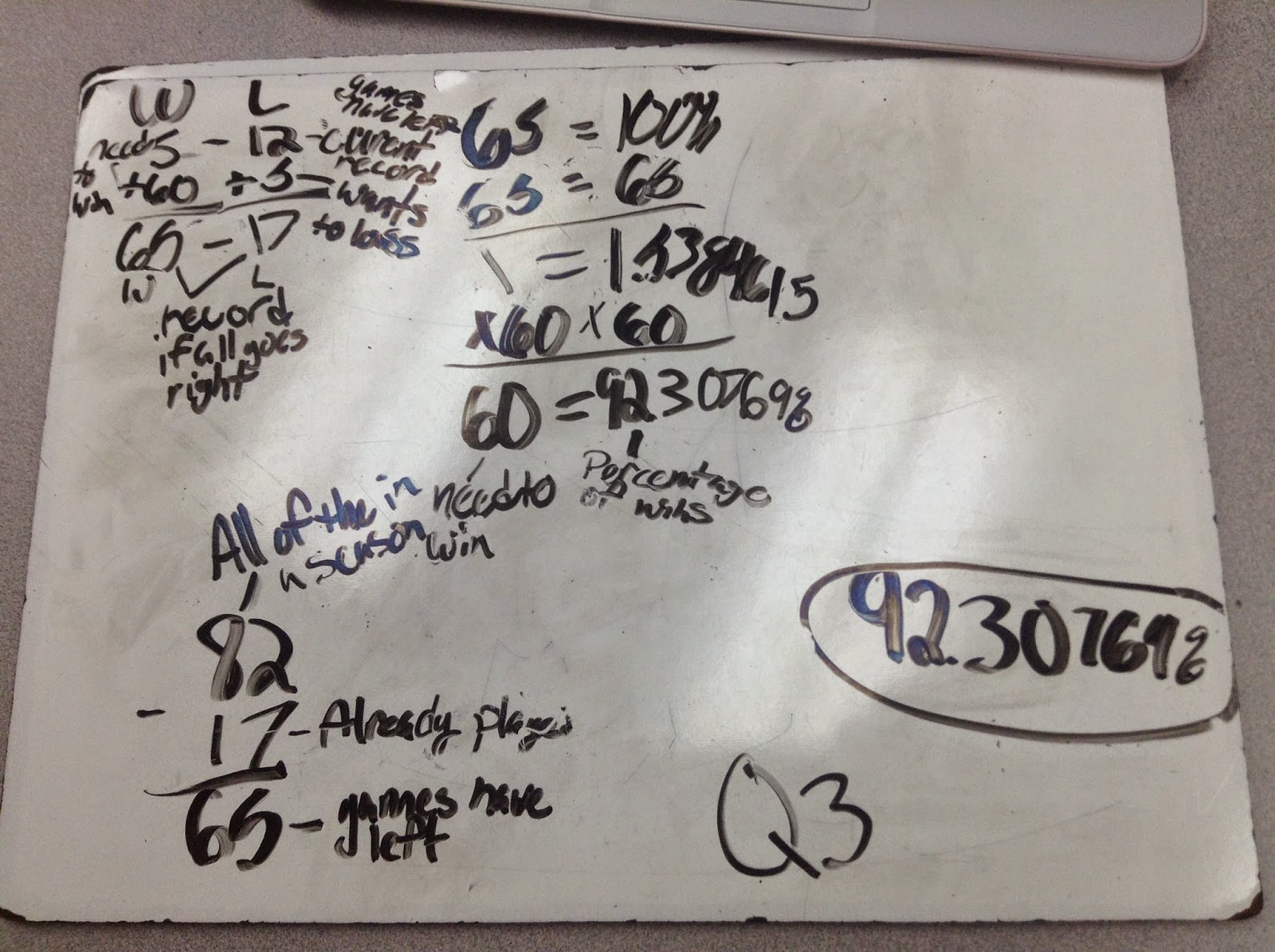@mjfenton was able to take a rather unique storyline from this year's NBA season and turn it into an interesting mathematical task.
http://reasonandwonder.com/?page_id=2063
If you don't follow the NBA, the Oklahoma City Thunder have been an upper echelon franchise for the past 4 or 5 years. They have two of the associations biggest stars...Kevin Durant and Russell Westbrook. Both players missed the beginning of the season with injuries, but are back but behind the eight-ball. In their absence, the team got off to a putrid start. OKC fan/teacher @_levi_ assured me that the Thunder would make the playoffs, but I thought it might be better to let my 7th graders decide.
Here is what I gave the students with some slight altercations to the original...
http://bit.ly/137tfGi
Here are the base questions I proposed...
1) If you take the past seasons into account, how many wins do you think the Thunder can finish with this year given the 5 win and 12 loss start?
2) Given that 8 teams make the playoff in the Western Conference, do you think they can make the playoffs with such a bad start? If so, how high of seed would you expect them to get given the standings of the previous 5 years?
3) The all-time winningest season for the Thunder came when they were still the Seattle Supersonics. The Sonics won 64 games in 1995-1996. What percentage of the remaining games would the Thunder have to attain to break that record this season?
As far as standards go...
7.RP.A
Students used a variety of methods to find a way to compare current and previous data, whether it be through use of proportions and ratios/finding percentages...ultimately solving a problem
6.RP.A
Even though I used this with 7th graders, most of the calculations were a product of this 6th grade domain...
I don't think this entirely applies, but I think a case could be made that this task links with 7.SP.A.1 and 7.SP.A.2 as well. Students are using past samples of previous Thunder records and past Western Conference results to make predictions.
This task did not get off the ground smoothly. I knew we were in trouble when a student walked in, looked at the information on my television and said,"NBA, is that football?" One of the biggest problems I had was my students' lack of sports knowledge (and this is boys and girls). Many students didn't know what a record of 50-32 meant. This was a roadblock, but nothing insurmountable...
Students came up with many ways to make the first prediction of final total wins. Here are a few:
*Based on percentage of the previous year (most comparable to this season)
*Based on average of the last 2 or 5 years using both a percentage or proportion out of 65 (we had to discuss how the short year would mess with the average)
*Using the current record since both player's returns (6-1) and using that ratio the the rest of the season (a little higher than average but you could make the argument)
The second question was even more diverse:
*Looking at the last 5 seasons where the predicted wins would slot the Thunder, getting rid of an outlier seed number (2), and averaging the rest
*Using the current percentages of this season and the percentage of the predicted Thunder finish and slotting them accordingly
*Finding the average wins from the previous seasons for each seed
The third question was more of right or wrong answer when compared to the other two.
This task is different than a majority of tasks I have done in my class because there is much more variability with the answers. Frankly, this is because there are more variables to account for and students can pick and choose those variables. Another task I have done recently with many different solutions possible is @MathletePearce's Mowing the Lawn (one of my student's work appears at the bottom of the link). Most of the tasks have done (like most of the @ddmeyer tasks we have completed) have multiple entry points and multiple paths, but usually the solution is similar (this might be an overgeneralization, but I think it makes sense). I don't think either is better than the other...they are just different.
Overall, this was a successful task that I will use again next year. By the way @_levi_, you should be able to sleep at night...all of my 7th graders concluded the Thunder would make the playoffs...you just might be without the home court advantage.
Below is a sampling of student work...Enjoy!
Previous Posts to Tasks and Student Work:
Toothpick Task
Man Versus Squirrel
Dr. Clayton M. Edwards
Ed. D. Curriculum and Instruction (UNI)
Awarded Outstanding Doctoral Dissertation at the University of Northern Iowa 2014
MA Middle Level Mathematics (UNI)
Middle School Mathematics Instructor
Grundy Center Middle School




















